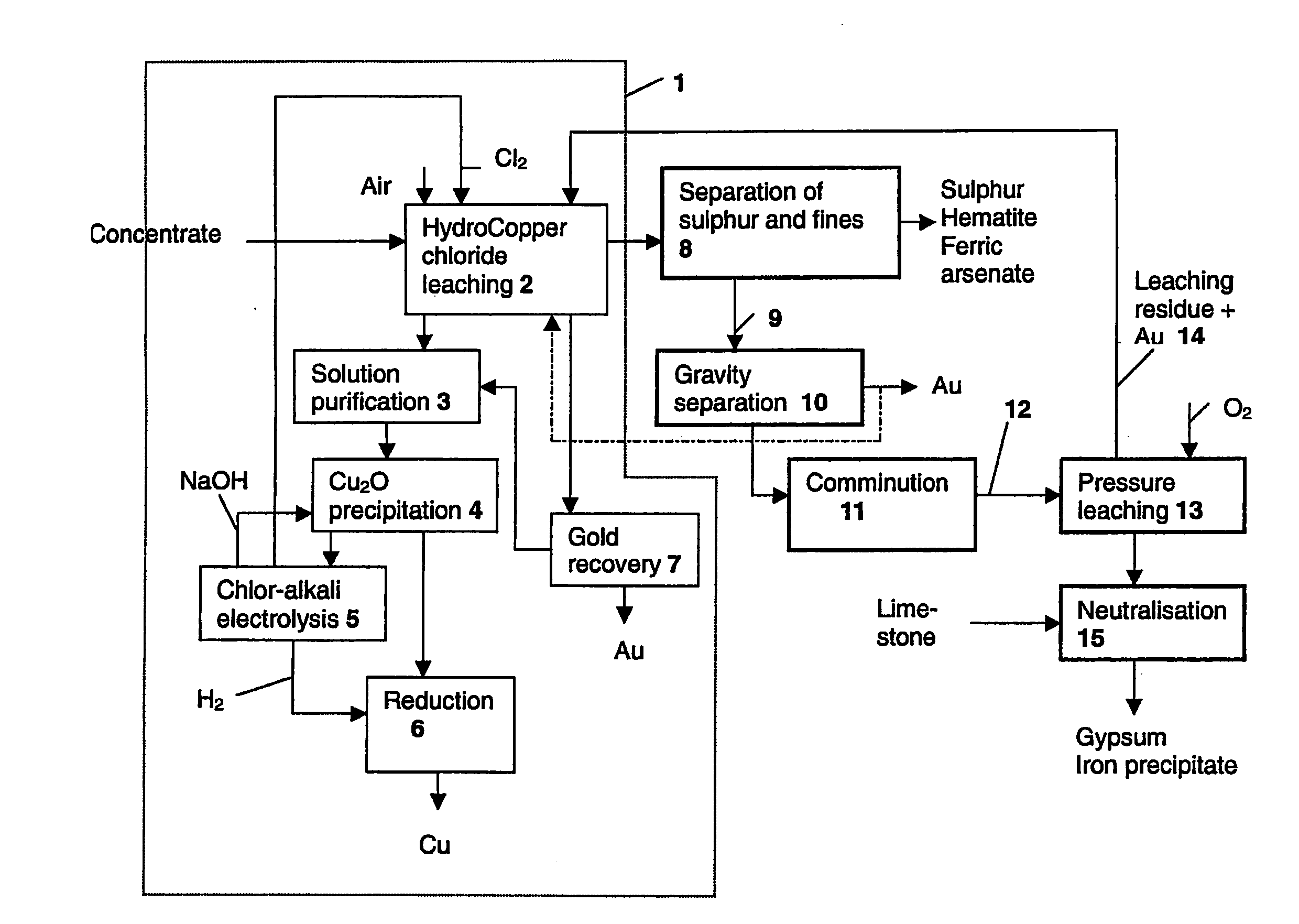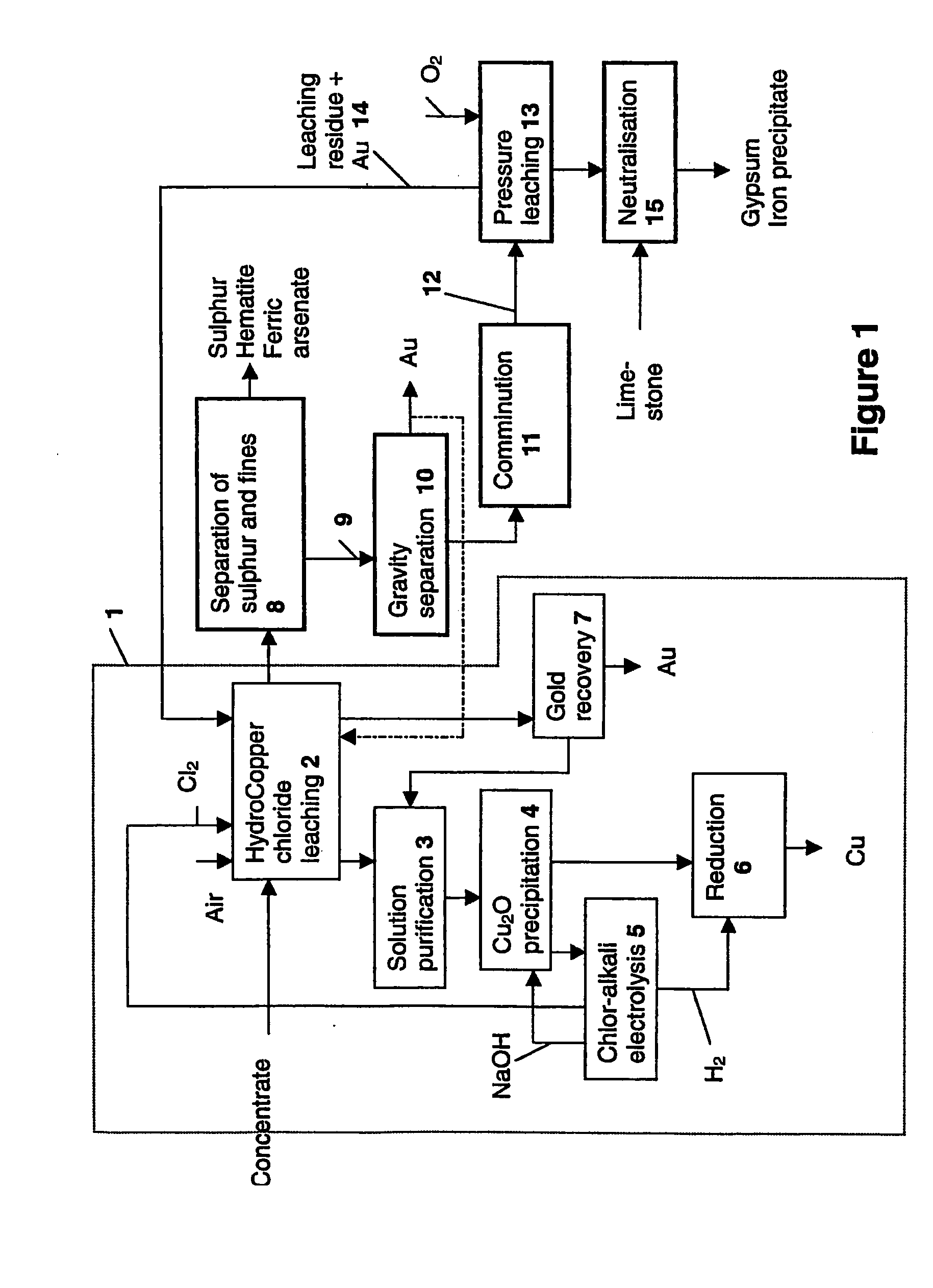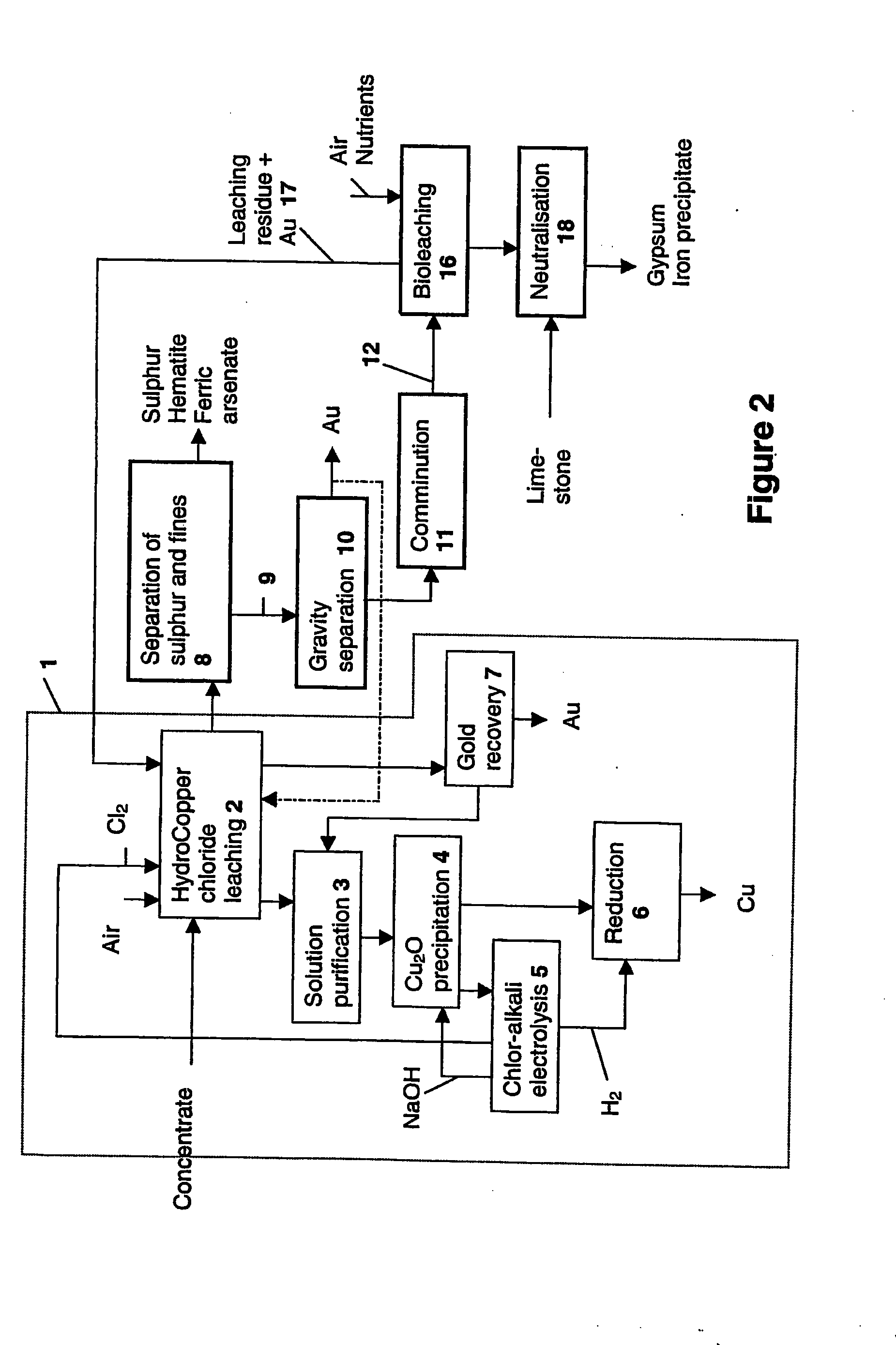Method for the Recovery of Gold from Sulphide Concentrate
- Summary
- Abstract
- Description
- Claims
- Application Information
AI Technical Summary
Benefits of technology
Problems solved by technology
Method used
Image
Examples
example 1
[0049]A mixture was made, which was 50% copper concentrate and 50% gold concentrate. The gold concentrate represented a difficult type and the yield of gold from it in a 24-hour cyanide leaching test was 3%. Mineralogical studies showed that the majority of the undissolved gold of the gold concentrate was bound to pyrite and arsenopyrite as “invisible gold”. The gold was divided between pyrite and arsenopyrite in roughly a 50:50 ratio. The chemical composition of the concentrates is shown in Table 1 and the mineral composition of the main minerals in Table 2.
TABLE 1Composition of concentrates and bulk concentrate.Cu %Fe %Zn %As %S %Au g / tCu concentrate27.334.53.05035.66.3Au concentrate0.9235.20.907.5938.034.450 / 50 mixture14.134.82.003.836.820.4
TABLE 2Mineral composition of leaching feedCopperIronOther mineralspyrite %Arsenopyrite %pyrites %Zinc blende %%41.07.837.53.413.7
[0050]Laboratory-scale chloride leaching was carried out on the combined concentrate in a 10-litre titanium react...
example 2
[0063]The product from chloride leaching and physical separation presented in Example 1 (underflow) was pressure leached in a 1.5-litre titanium autoclave in the following conditions:
Solids mass: 200 g
Volume of solution: 1.2 litres
Oxygen flow: 1.01 / min
Temperature 200° C.
[0064]Retention time 2 h
Overpressure of oxygen 7 bar
[0065]After treatment the solids content was as follows:
TABLE 6Composition of solids after pressure leaching treatment.Mass offeed %Cu %Zn %As %Fe %S %S° %Au g / t76.90.460.064.249.84.71.623.7
example 3
[0066]Chloride leaching was carried out on the residue obtained from the pressure leaching of Example 2 in HydroCopper process conditions.
Volume of solution: 1.2 litres
Mass of solids 0.12 kg
Temperature 95° C.
[0067]Retention time 24 h
Oxidant: Chlorine gas, air
NaCl 280 g / l
[0068]Cu2+ content: 40 g / l
pH: 2.0-2.2
Redox: 580-650 mV (vs. Ag / AgCl)
[0069]The composition of the leaching residue was as follows:
TABLE 8Composition of solids after chloride leaching of pressure leachingresidue.Mass offeed %Cu %Zn %As %Fe %S %S° %Au g / t99.40.410.053.213.54.51.51.4
[0070]The gold yield in chloride leaching of the autoclave residue was 93.9%. When the whole chain is calculated from the original concentrate (Table 2), the gold yield was 93.8%.
PUM
| Property | Measurement | Unit |
|---|---|---|
| Electric potential / voltage | aaaaa | aaaaa |
| Reduction potential | aaaaa | aaaaa |
| Fraction | aaaaa | aaaaa |
Abstract
Description
Claims
Application Information
 Login to View More
Login to View More - R&D
- Intellectual Property
- Life Sciences
- Materials
- Tech Scout
- Unparalleled Data Quality
- Higher Quality Content
- 60% Fewer Hallucinations
Browse by: Latest US Patents, China's latest patents, Technical Efficacy Thesaurus, Application Domain, Technology Topic, Popular Technical Reports.
© 2025 PatSnap. All rights reserved.Legal|Privacy policy|Modern Slavery Act Transparency Statement|Sitemap|About US| Contact US: help@patsnap.com



